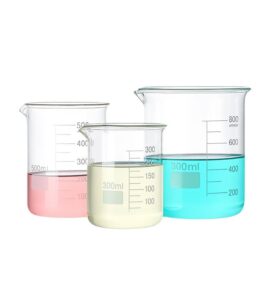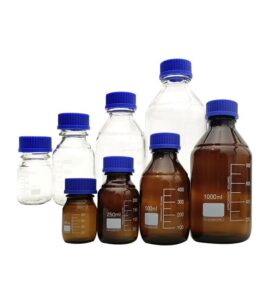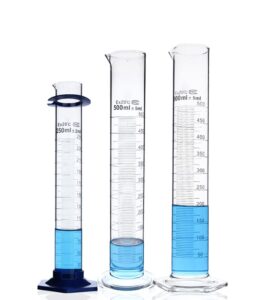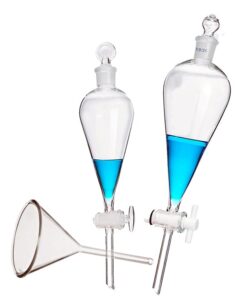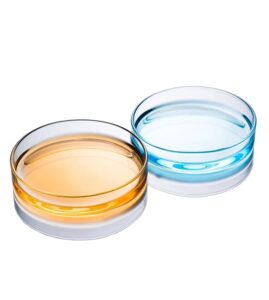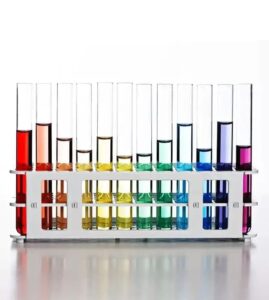How often do you ponder the full potential of the mundane yet magical laboratory glassware that surrounds us? Have you ever been truly fascinated by the versatility of a measuring cylinder? Have you questioned its uses beyond its common application for volume measurements?
The measuring cylinder, often considered as a staple in laboratories, is predominantly used to measure the volume of liquids with moderate precision. Its applications, however, are far more wide-ranging than you might initially suspect. From laboratories to classrooms, from industrial settings to home kitchens, the humble measuring cylinder has solidified its position in countless domains.
Let’s embark on a journey, exploring the depths of the measuring cylinder’s versatility, which has often been overlooked. It’s time to unmask the many hats that this quintessential laboratory tool can don.
Exploring the Primary Use: Volume Measurement
A measuring cylinder, often referred to as a graduated cylinder, is one of the most frequently used pieces of laboratory glassware. Its primary purpose is the measurement of the volume of a liquid. The accurate reading of volume depends on the correct interpretation of the liquid’s meniscus, the curve at the top of the liquid. With correct usage and interpretation, one can accurately measure volumes within 1% of the true value .
The Role of Measuring Cylinders in Scientific Research
Beyond the basic use of volume measurement, measuring cylinders play a pivotal role in various scientific studies and experiments. The calibrated markings enable precise measurements of volumes, essential in chemical reactions, biological tests, and many more scientific applications.
For instance, in chemical titration, the precise volume measurement of the solution being titrated is crucial. It significantly impacts the accuracy of the resulting concentration determination .
Similarly, in biological experiments, measuring cylinders are often used to prepare culture media, solutions, and other mixtures that require specific volume ratios .
Unveiling the Variety of Measuring Cylinders
Measuring cylinders come in an impressive array of types and sizes, catering to the diverse needs of laboratories, industries, and educational institutions.
- Single Metric Scale Graduated Cylinders: These are the most common type, featuring a single metric scale that is calibrated “to contain” or “to deliver,” indicated by “TC” or “TD,” respectively.
- Double Metric Scale Graduated Cylinders: These cylinders feature two metric scales and are beneficial when measurements need to be taken from different reference points.
- Class A and Class B Cylinders: Class A cylinders offer the highest precision and are typically used in professional laboratories, whereas Class B cylinders offer lesser precision but are more cost-effective, making them suitable for educational settings.
- Polypropylene Cylinders: These cylinders offer high durability and clarity, along with excellent chemical resistance. They are autoclavable, making them suitable for biological labs.
- Borosilicate Glass Cylinders: These cylinders offer excellent thermal resistance and are perfect for use with hot liquids. They also provide high chemical resistance.
Utility in Industrial Settings
Outside the laboratory, measuring cylinders find utility in various industrial settings. The oil and gas industry, for instance, uses measuring cylinders to measure the specific gravity of different fluids accurately. These measurements assist in quality control and product standardization .
In the food and beverage industry, measuring cylinders aid in preparing large batches of products, where specific ratios of ingredients are required. They also play a significant role in the wine industry, where the sugar content (Brix) in grape juice is measured to determine the potential alcohol content of the wine .
The Ubiquitous Presence in Education
Measuring cylinders are not just confined to laboratories and industries; they play an essential role in educational settings. They serve as practical tools for teaching volume measurement, density calculations, and much more. Through hands
-on experiments involving measuring cylinders, students are introduced to the fundamentals of laboratory procedures, precision, and accuracy.
Moreover, they aid in imparting a visual understanding of the concept of volume and liquid displacement. Students conduct experiments using measuring cylinders, such as Archimedes’ principle, providing them a deeper understanding of the theory.
A Handy Tool in Culinary Arts
The use of measuring cylinders extends beyond scientific, industrial, and educational sectors. In the realm of culinary arts, a measuring cylinder finds its place in the kitchen, where precision is paramount, especially in baking. Measuring cylinders are used for gauging volumes of liquid ingredients accurately, ensuring the right balance of flavors, textures, and proportions in the final product.
Not to mention their role in molecular gastronomy, where chefs employ scientific techniques to create innovative and exciting dishes. Here, the precise measurement of liquids and semi-solids using measuring cylinders is a prerequisite .
Key Considerations for Accurate Usage
Using a measuring cylinder may seem straightforward, but ensuring accurate measurements requires mindfulness and precision. Here are some key considerations:
- Correct Positioning: Always place the cylinder on a level surface before taking measurements. A tilted cylinder could lead to inaccurate readings.
- Avoiding Parallax Error: The reading should be taken at eye level, aligning with the lowest point of the meniscus to avoid parallax error.
- Cleanliness: Ensure the cylinder is clean before use. Residual matter can affect both the volume and the nature of the substance being measured.
- Avoiding Wetting: Certain liquids, particularly viscous ones, tend to cling to the walls of the cylinder. This wetting effect can lead to volume misreadings. Allowing the liquid to settle and using a cylinder made of suitable material can help reduce this effect.
- Temperature Considerations: Remember, most cylinders are calibrated for use at a specific temperature, typically 20°C. Changes in temperature can cause the cylinder to expand or contract, affecting measurement accuracy.
Frequently Asked Questions
Absolutely, addressing common questions can enhance understanding. Here are a few that are often asked:
How do you read a measuring cylinder?
To read a measuring cylinder, you need to look at the liquid’s meniscus, the curve at the top of the liquid. You should read the value at the bottom of the meniscus, at eye level, to ensure accurate readings.
Can I use a measuring cylinder to measure the volume of a solid?
Yes, measuring cylinders can be used to measure the volume of a solid by using the method of water displacement. When the solid is placed in the measuring cylinder containing a known volume of water, it displaces an amount of water equivalent to its own volume. By subtracting the initial volume of water from the final volume, the volume of the solid can be determined.
What is the difference between a measuring cylinder and a volumetric flask?
A volumetric flask is used for very precise measurements of liquid volumes, with a typical accuracy of 0.1% or better, while a measuring cylinder is used for measurements requiring less precision, usually accurate to within 1%. The choice between the two depends on the level of accuracy required.
How do I clean a measuring cylinder?
You should clean a measuring cylinder with a laboratory-grade detergent, rinse it thoroughly with water, and then rinse again with distilled water to ensure no residues remain. After rinsing, it should be allowed to air dry.
From the exploration above, it’s evident that the uses of a measuring cylinder are far more extensive than mere volume measurement in a lab. It is a versatile tool whose usage spans across scientific research, industrial applications, educational demonstrations, and culinary arts. The humble measuring cylinder is an unsung hero that facilitates precision and contributes to advancements in multiple domains.
In our journey to unravel the uses of a measuring cylinder, we have come to appreciate its versatility and indispensable role in various fields. A simple tool that often goes unnoticed, yet its importance can’t be overstated. We hope this deep dive has enlightened you about the numerous applications of a measuring cylinder, and instilled an appreciation for this ubiquitous piece of glassware.


